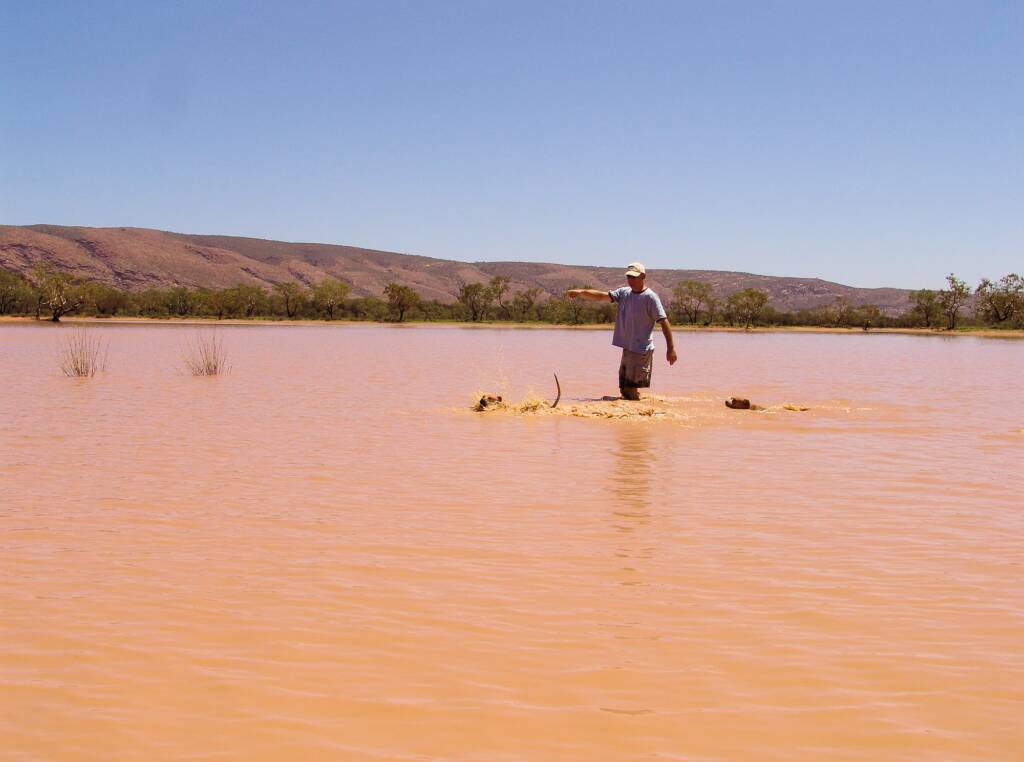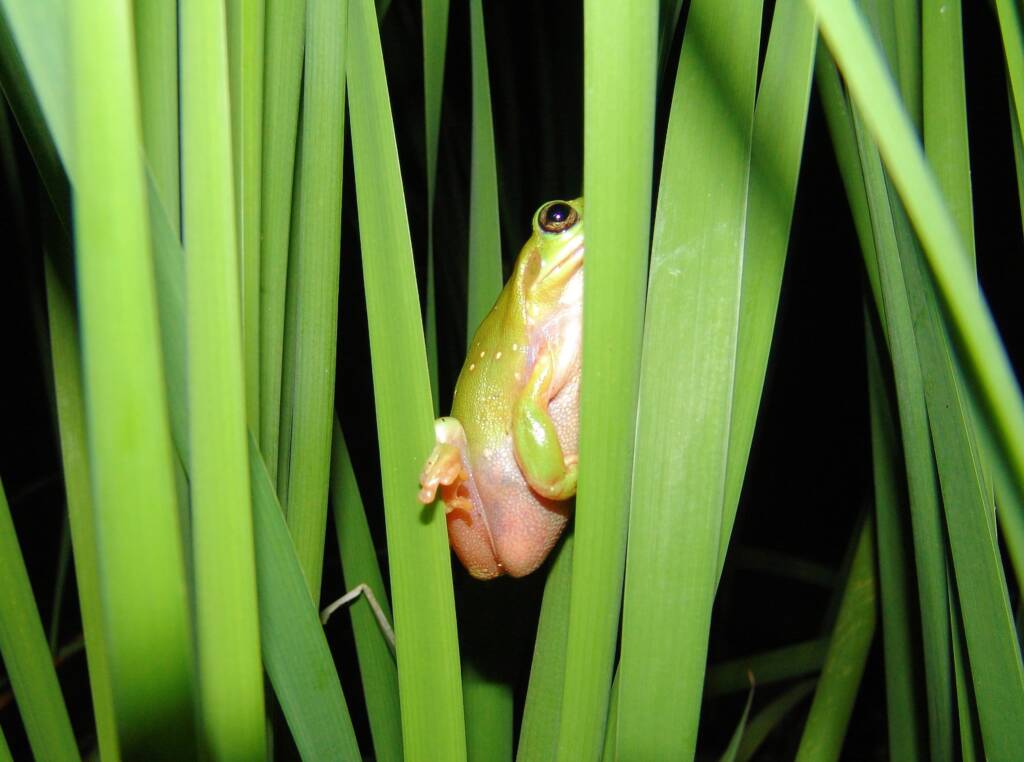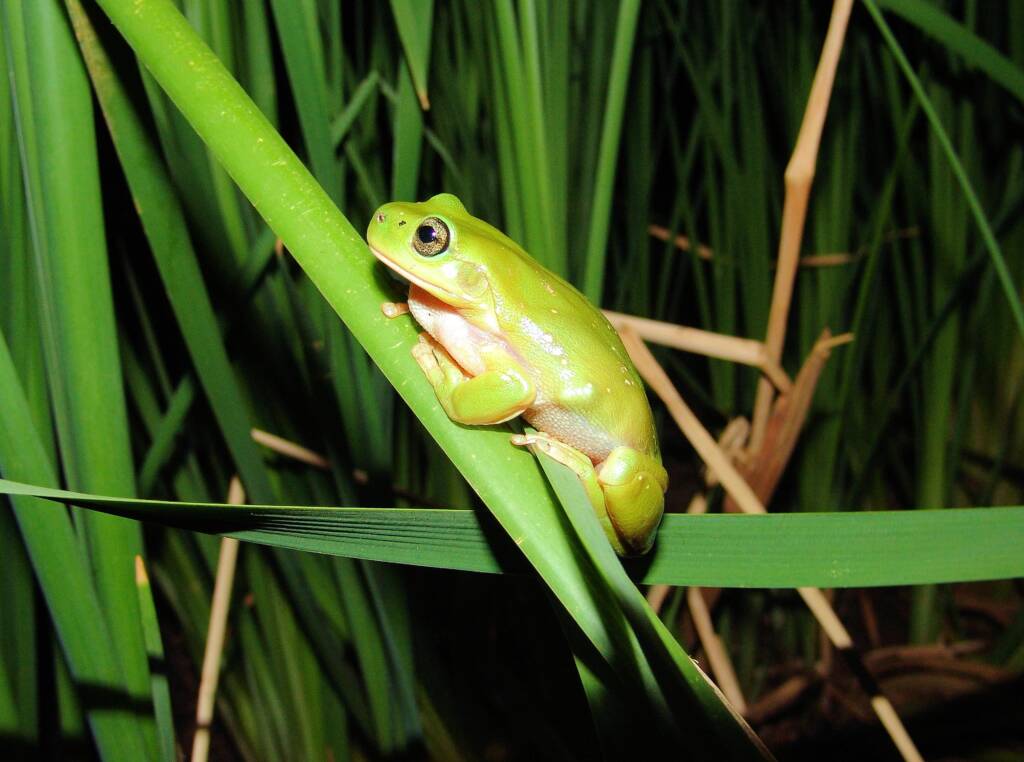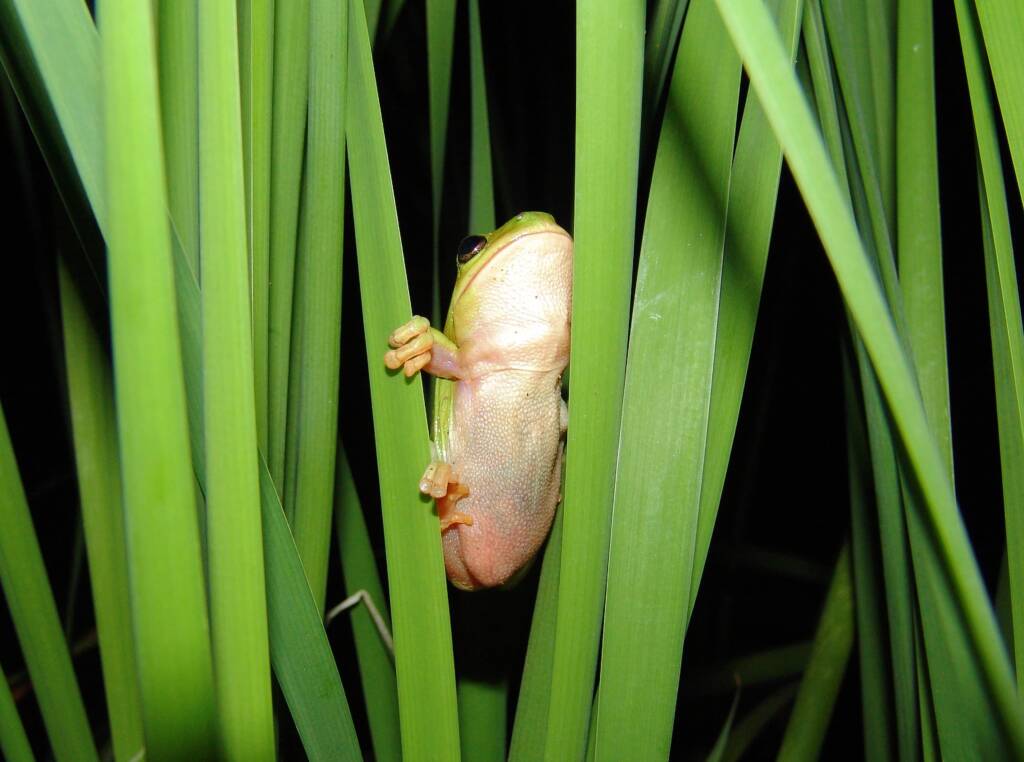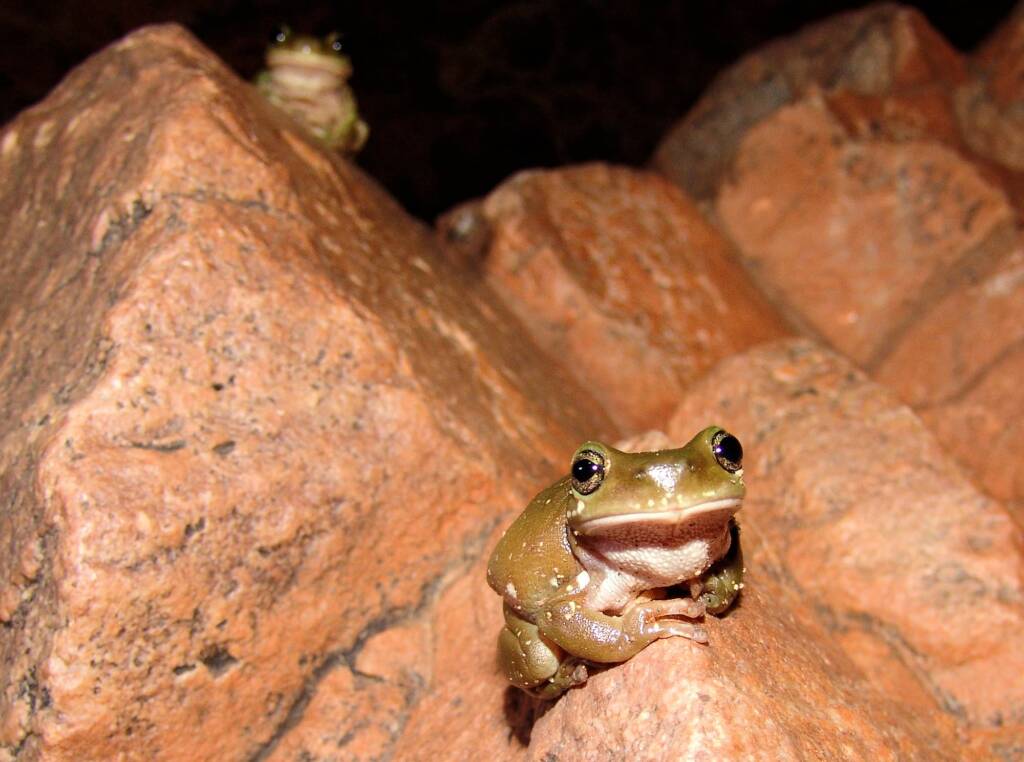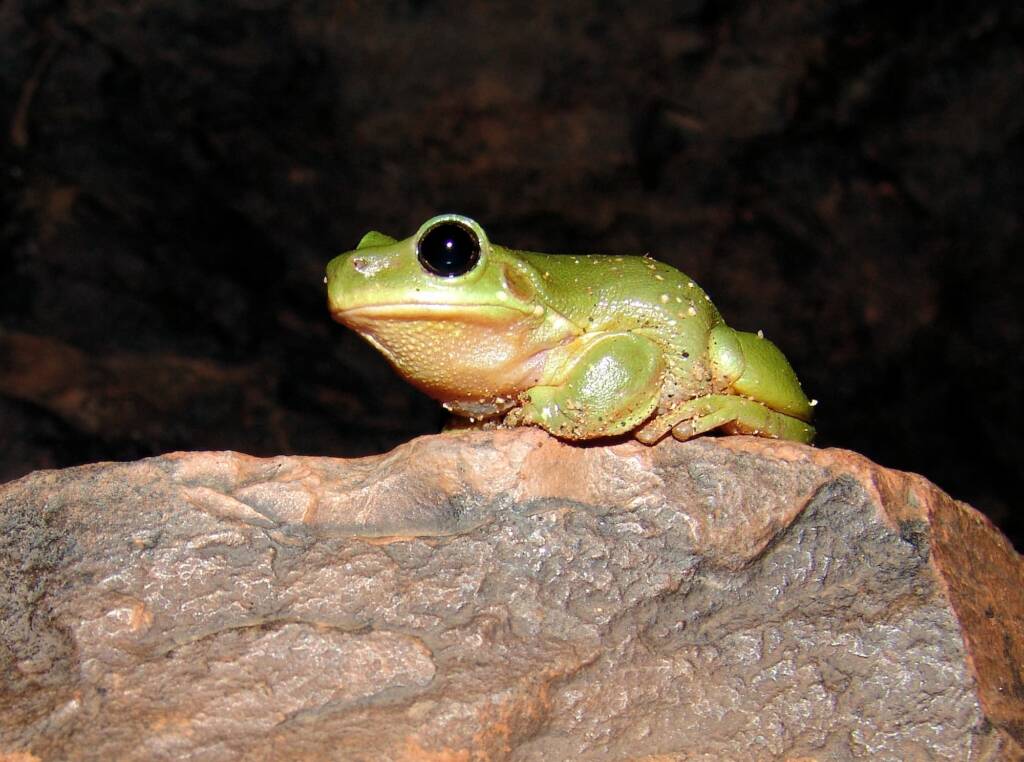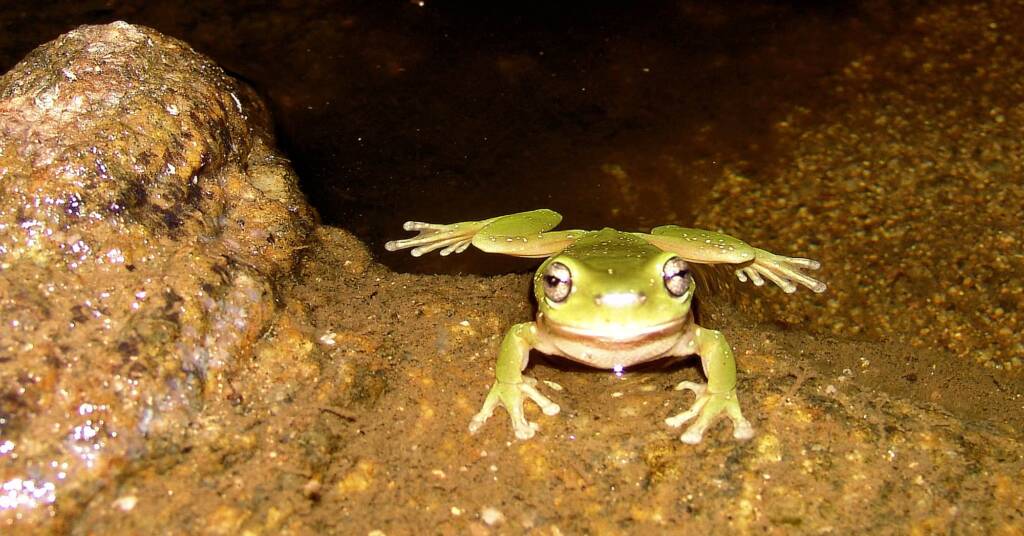Author Koh Lin ◦
I was looking back through my image archive the other day, when a collection of photographs brought back some vivid memories… The year was 2010, early January.
It was a memorable start to the year (I can still remember it, like it was yesterday). The skies were grey, heavily laden with rain clouds. This was a time when Alice Springs and Central Australia was seeing significant rainfall, causing the normally dry waterholes and river beds to fill, swell and flow.
With all the rain, the air was heavy with moisture, and the excitement was palpable. Already there was a constant stream of locals going down to the Todd River (which is normally dry) to witness the start of the river flowing and to enjoy the rain.
Central Australia and Alice Springs have a number of rivers and creeks, albeit they are usually dry, although those with the knowledge, would know where to dig down into the sand to find water.
So now with all this rain, the normally dry creeks and river, including the Todd River that passes through the heart of town, were filling up with water. Waterholes were overflowing, connecting the dry creeks and rivers, as they merged into other rivers, continuing on their journey southward to eventually end at Lake Eyre.

These are great times for those with dogs, especially if they are water babies, enjoying the waterways like never before. Walks down to the river, was in order for our canine family member.
Even Ilparpa Claypans was popular with the chocolate milkshake coloured water and the appearance of endless connecting waterfilled claypans.
This was the period when once in a decade and sometimes longer, Mother Nature puts on a unique show for us mere mortals.
During periods of rainfall in the region, many of the gorges, waterways and dry riverbeds fill with water. If enough rain falls, creating pools of water, nature takes its course and life appears as if from nowhere.
It was in a gorge just on the outskirt of Alice Springs, that conditions were perfect. The “bush telegraph” had kicked in, before the official news. Simpsons Gap had come alive with thousands of frogs.
This unique phenomena, saw the appearance of thousands of frogs of all different species. It provided the opportunity for people to experience the wonders of nature and enjoy getting up close to the native amphibians. So prolific were the frogs, you had to be careful where you walked.
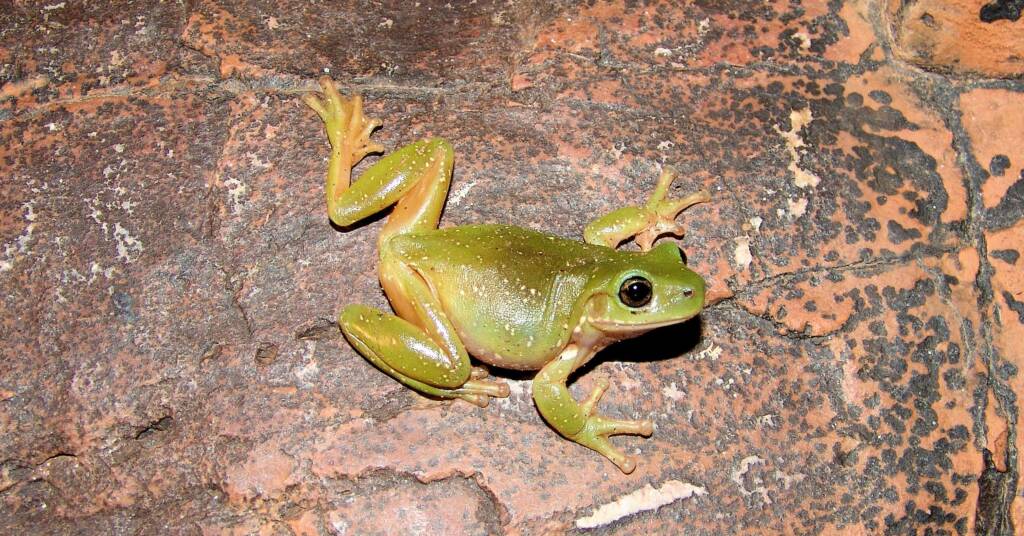
Located in the West MacDonnell National Park, Simpsons Gap is one of the more well known gaps in the West MacDonnell Ranges, being only 26 km west of Alice Springs.
The 2010 rain saw a huge amount of water flowing through Simpsons Gap, and the ponds along the water course was teeming with aquatic life… frogs appeared, called, mated, laid their eggs, with tadpoles everywhere, turning into frogs to complete the cycle…
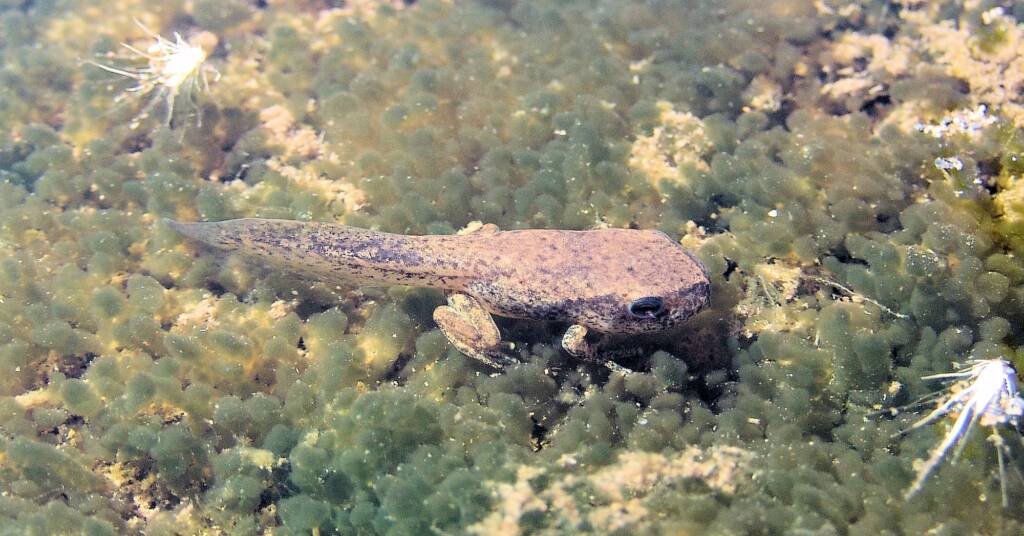
Among the many frogs seen, are the Spencer’s Burrowing Frog, who emerge from their hibernation by digging their way up out of the sand. The male frogs (smaller in size then the female), make their calls and mate. The females, which are distinctly larger than the male, then lay their eggs in the ponds.


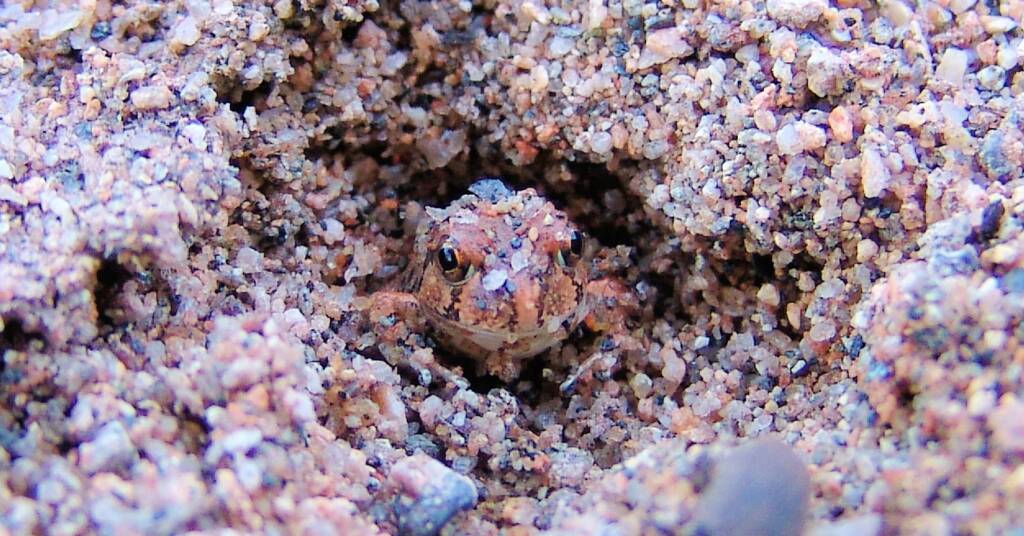


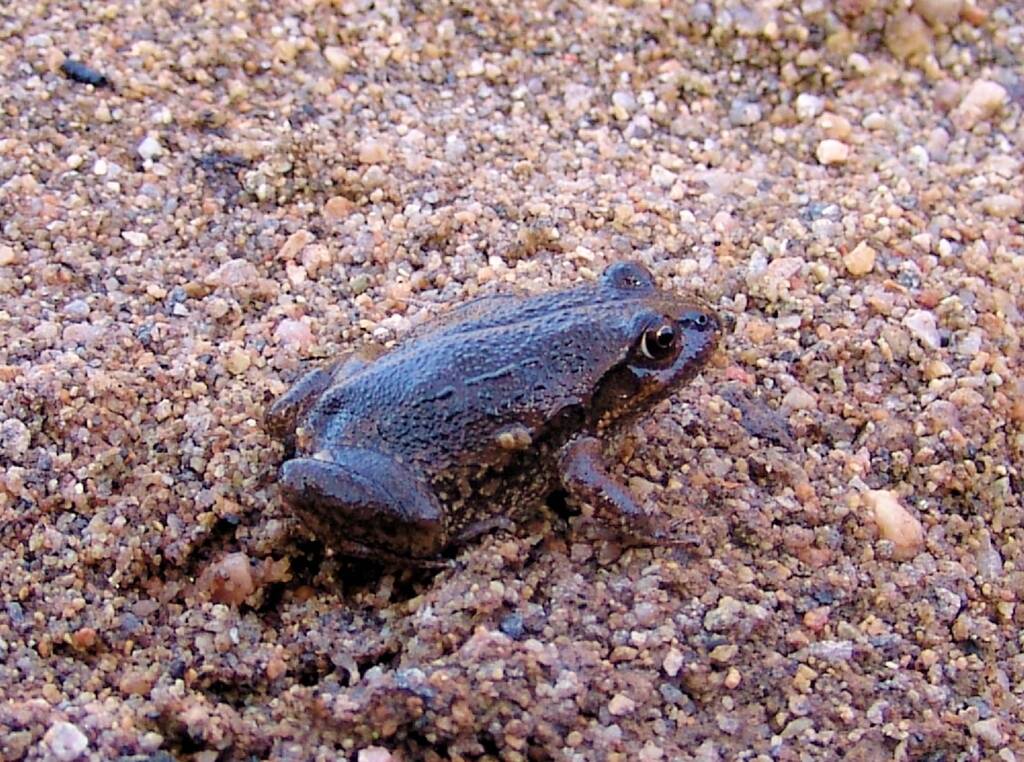
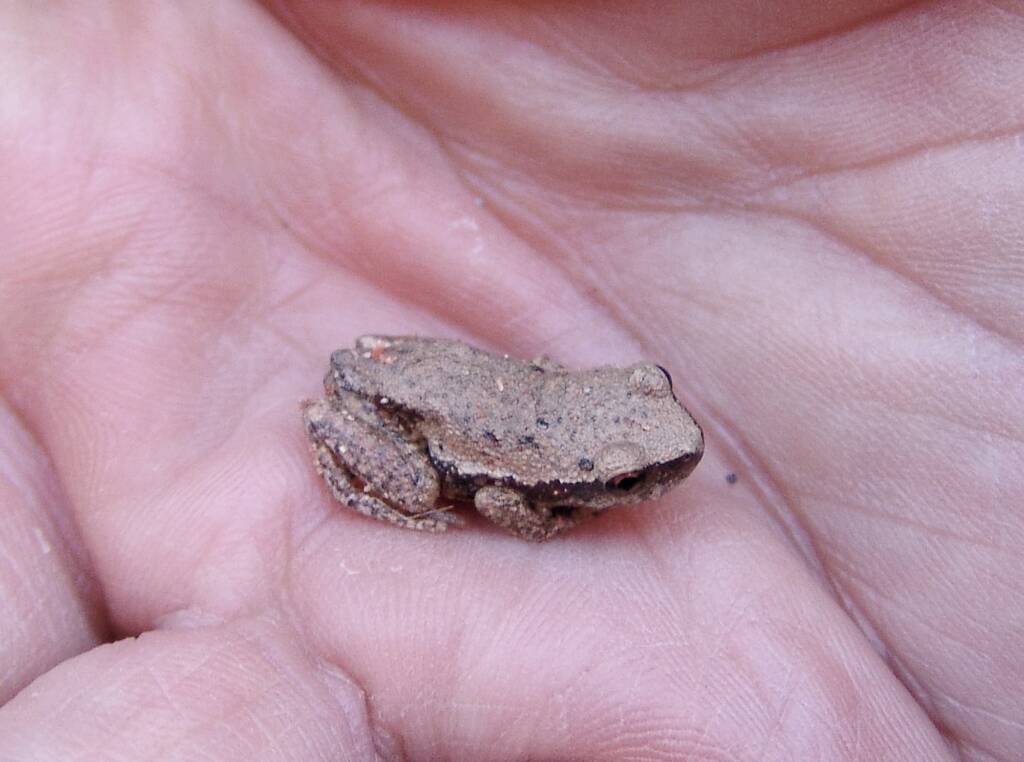
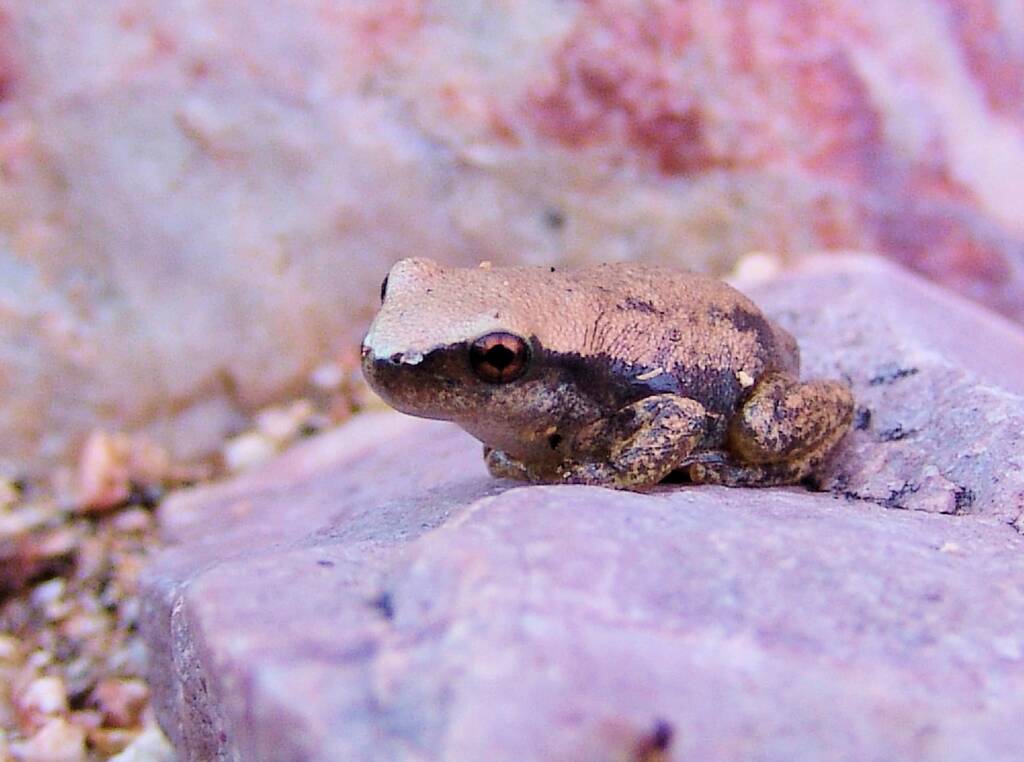
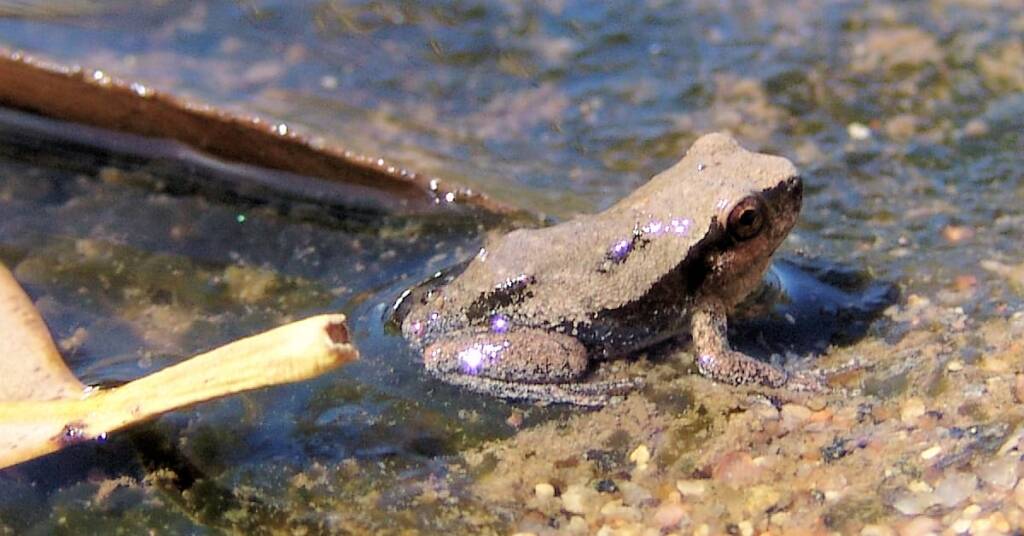
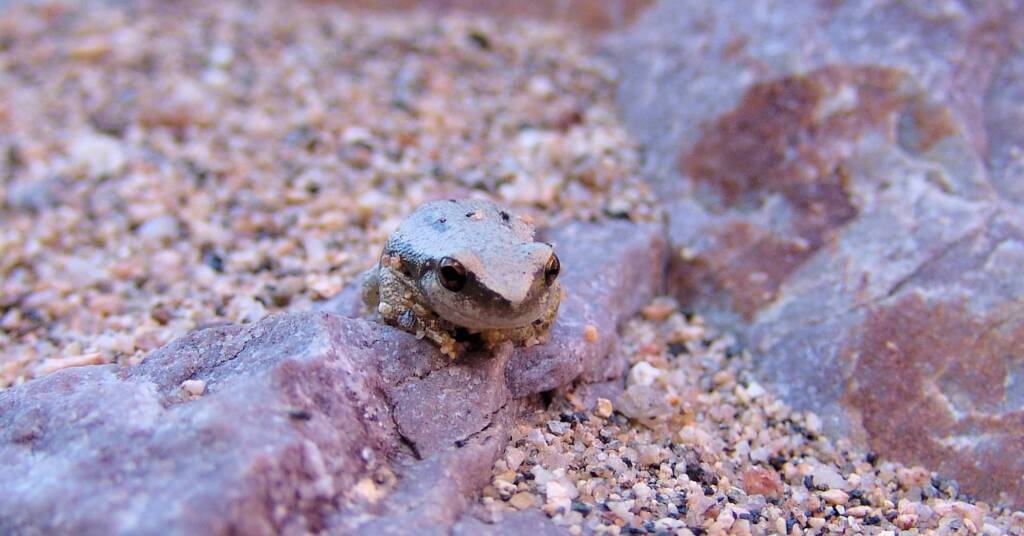
If you are new to the region, you may wonder how an arid landscape such as Central Australia could have frogs. In fact, Central Australia has a number of endemic frog species… that include the Centralian Tree Frog, Desert Tree Frog, Main’s Frog and the Spencer’s Burrowing Frog.
As dust and night fell, the Centralian Tree Frog would all come out of the cracks and crevices of the gorge. What a night and an experience to be treasured.
More frog images and information in our Frogs of Simpsons Gap and Flora and Fauna: Frogs. Check out our images of Frogs at the Ilparpa Claypans.



















